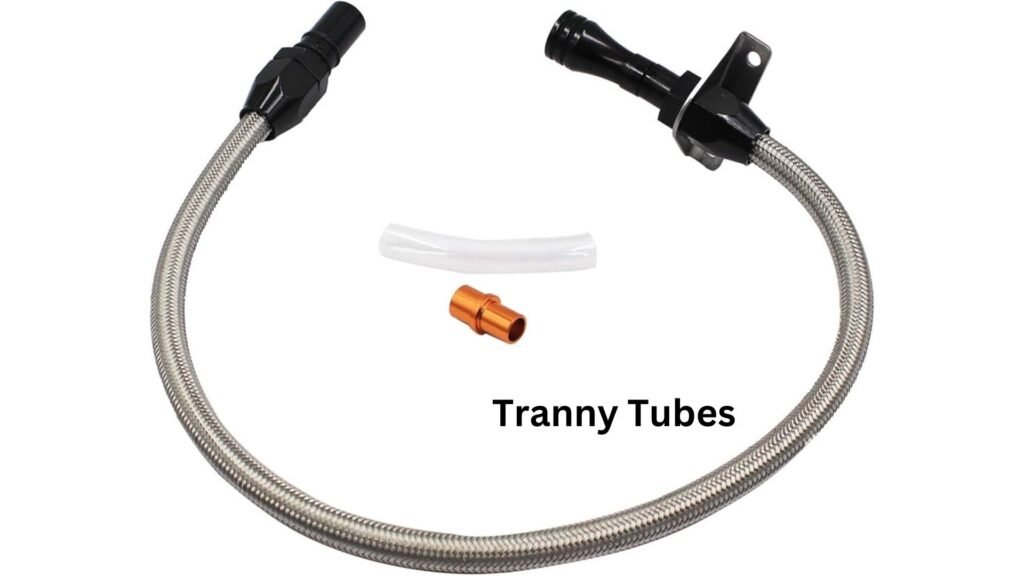
Understanding Tranny Tube: Definition, Uses, and Importance in Automotive Systems
The automotive world is vast, filled with a wide range of components that contribute to the seamless operation of your vehicle. Among these is the “tranny tube,” a crucial part of the vehicle’s transmission system. Despite its often overlooked status, this small yet significant piece plays an essential role in maintaining the performance and health of your car’s transmission. In this article, we’ll swoop into what a tranny tube is, its uses, how it works, and why regular maintenance of this component is hair-trigger for your vehicle’s long-term performance.
What Is a Tranny Tube?
A tranny tube, short for transmission tube, is a component of the transmission system found in both will-less and transmission vehicles. The tube is primarily used to trammel and fill the transmission fluid, a crucial substance for the operation of the transmission system. Transmission fluid functions as both a lubricant and a hydraulic fluid, enabling the smooth operation of gears, reducing friction, and preventing wear and tear.
The tranny tube substantially provides a pathway for measuring the transmission fluid level and, when necessary, topping it up. In most vehicles, the tranny tube is unfluctuating to the transmission dipstick, which is used to measure how much fluid is present. Regular maintenance through the tranny tube ensures that the transmission remains lubricated, preventing overheating and reducing the likelihood of transmission failure.
Importance of Transmission Fluid
Before understanding the full function of a tranny tube, it’s important to recognize the role of transmission fluid in the vehicle’s overall operation. Transmission fluid is a special type of oil designed specifically for the moving components inside the transmission system. It serves multiple functions, including:
- Lubrication: Reducing friction between moving parts.
- Cooling: Preventing overheating in the transmission.
- Hydraulic Fluid: Helping to engage the gears in will-less transmissions.
- Protection: Preventing wear and corrosion of the internal parts.
Without sufficient transmission fluid, the transmission system can suffer serious damage, leading to plush repairs or plane full replacement. This is why the tranny tube is a hair-trigger component, permitting you to monitor and maintain proper fluid levels.
Types of Tranny Tubes
Tranny tubes can vary depending on the type of vehicle and the transmission system it uses. Below are the main types of tranny tubes you might encounter:
- Will-less Transmission Tube
For vehicles with will-less transmissions, the tranny tube typically comes with a dipstick attached, which makes it easy to trammel the transmission fluid level. In this type of system, the tranny tube is usually unfluctuating directly to the fluid reservoir, permitting easy wangle to measure and refill transmission fluid. - Transmission Transmission Tube
Manual transmissions function differently and often do not have the same ease of wangle to transmission fluid levels as will-less systems. In these cases, the tranny tube may be smaller or designed differently, sometimes requiring increasing transmission effort to wangle and measure fluid levels. However, the overall purpose of monitoring and refilling the transmission fluid remains the same. - Aftermarket Tranny Tubes
Aftermarket tranny tubes are moreover available, designed for high-performance vehicles or custom builds. These tubes are often increasingly durable, flexible, or plane longer, permitting easier wangle when working on specific models or performance-enhanced cars.
How to Use a Tranny Tube
Using a tranny tube for maintenance is a relatively simple process, but it is important to follow the correct procedure to stave contamination or improper fluid levels, which could lead to transmission problems.
- Park the Vehicle on Level Ground
First, ensure that the vehicle is parked on an unappetizing surface. This will require a well-judged reading of the transmission fluid level and stave any inaccuracies caused by the vehicle stuff tilted. - Locate the Tranny Tube
In most cars, the tranny tube is located near the transmission system, usually unfluctuating to the transmission dipstick. The word-for-word location may vary depending on the make and model of the vehicle. - Remove the Dipstick
Carefully remove the transmission dipstick from the tranny tube. Wipe it with a rag, then reinsert it into the tube. After a few seconds, pull the dipstick when out and trim the fluid level. - Add Transmission Fluid if Necessary
If the transmission fluid is low, thoughtfully add the recommended type of fluid through the tranny tube. Be cautious not to overfill, as this can rationalize foaming and other issues in the transmission system.
Signs You Need to Trammel Your Tranny Tube
There are unrepealable warning signs that may indicate it’s time to inspect the transmission fluid levels and condition via the tranny tube:
- Shifting Issues: Difficulty shifting gears or elapsed shifts can indicate low or degraded transmission fluid.
- Noisy Transmission: Unusual noises like whining, grinding, or clunking sounds can suggest that your transmission fluid is low or contaminated.
- Burning Smell: A burnt odor from the transmission zone is often caused by overheating, which may be due to low fluid levels or old fluid.
- Fluid Leaks: If you notice red or brown fluid pooling under your vehicle, it may be leaking transmission fluid. Inspect the tranny tube and transmission system for leaks.
Maintenance Tips for Tranny Tubes
Regular maintenance of your tranny tube is essential for extending the lifespan of your vehicle’s transmission. Below are a few tips to ensure proper care:
- Trammels Fluid Regularly
Depending on how commonly yyourmomentum and the driving conditions (city traffic, long-distance, towing), you should ttrammelyour transmission fluid at least once every 6 months or as recommended by your vehicle’s manufacturer. - Alimony the Tube Clean
Dirt and trash can contaminate the transmission fluid, leading to poor performance or forfeiture of the transmission system. Make sure to alimony the tranny tube wipe when checking or subtracting fluid. - Use the Right Fluid
Always ensure that you are using the correct type of transmission fluid recommended by your vehicle’s manufacturer. Mixing variegated types or using the wrong kind can rationalize serious issues. - Trammels for Leaks
Regularly inspect your tranny tube and the surrounding areas for leaks. If you notice any fluid dripping, it’s essential to get the issue addressed as soon as possible to stave remoter forfeiture to the transmission.
Conclusion
The tranny tube may seem like a small, inconspicuous component of your vehicle, but its role in maintaining proper transmission function is vital. Regular checks and maintenance through the tranny tube ensure that your transmission fluid levels remain optimal, preventing overheating, excessive wear, and potential transmission failure. Whether you’re an automotive enthusiast or a regular driver, keeping an eye on your tranny tube can save you time, money, and stress in the long run.
By understanding its purpose and pursuing proper maintenance procedures, you’ll help ensure the smooth operation and longevity of your vehicle’s transmission system, making your driving wits both safer and increasingly enjoyable.



